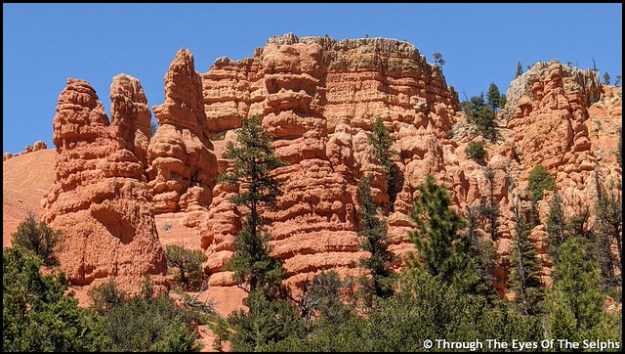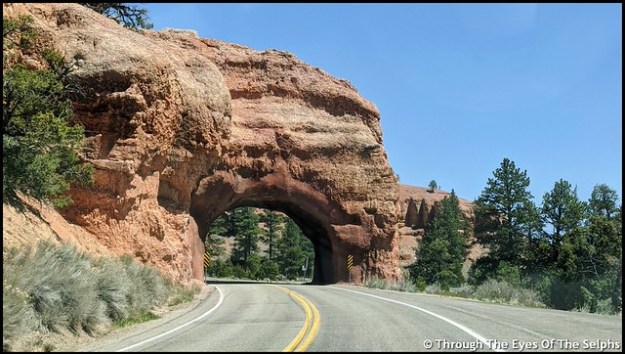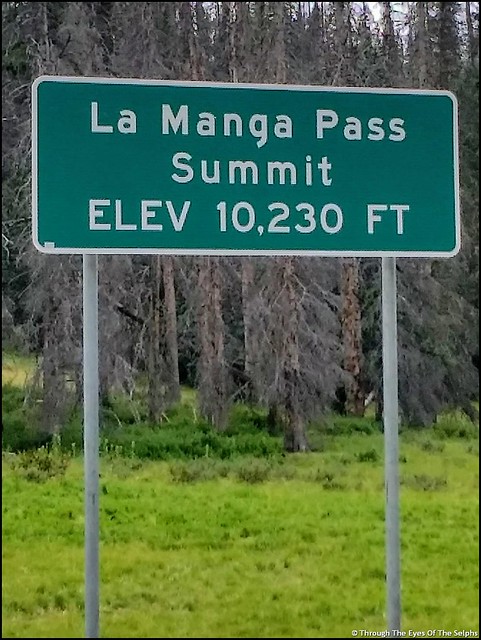Yellowstone is such an amazing national park. Whatever your interest, it has something for everyone. Geysers, hot springs, animals galore, gorgeous scenery and waterfalls. On our third day into the park we focused on waterfalls. 
Yellowstone has a grand canyon. Not as huge or magnificent as THE Grand Canyon, but still fabulous and beautiful with not one but two magnificent waterfalls. The Grand Canyon of the Yellowstone River was created from a lava flow 484,000 years ago. It is mainly made of rhyolite rock. Past and current hydrothermal activity weakened and altered the rock, making it softer. The Yellowstone River eroded these weakened rocks to deepen and widen the canyon, a process continuing today. The canyon is twenty miles long, more than a thousand feet deep, and between 1,500 and 4,000 feet wide with two waterfalls. 
One end of the canyon begins at the 308 foot tall Lower Falls which may have formed because the river flows over volcanic rock more resistant to erosion than rocks downstream. The same is true for the 109 foot Upper Falls. 

When we were here five years ago we hiked several trails around the falls and one strenuous hike with 13 switchbacks that took us to the top of the falls. This time the trail was closed due to the pandemic. Just one of many things still closed throughout the park. But we still had plenty to see and do to keep us busy. 

Along with visiting the canyon we drove through Hayden Valley where we saw plenty more bison, some elk and a bear. 

We didn’t get a picture of this bear since he was too far away to get a clear picture. 

This area took us along Yellowstone Lake (elevation 7,733 feet) with stunning views of water with snow capped mountains in the distance. 
We stopped at an area with rapids where we actually talked with a park ranger, our only real interaction with a ranger all week. He told us if we looked closely we could see fish. This time of year is when the water flows at its highest. The fish were waiting because they knew as the water flow decreased during the hotter summer months, it would be time to swim back to the lake. We enjoyed some time there, watching the fish near the surface occasionally jumping out of the water. Too fast to catch with a camera! 

This hill side is called Roaring Mountain. On the hill side if you zoom in you can see two active steam vents. 

We stopped at a mud volcano area with a nice boardwalk around the hot springs. There were plenty of signs warning people to stay on the boardwalk because thermal areas have a thin crust above boiling hot springs and scalding mud. Some of the pools are acidic enough to burn through boots! More than twenty people have been scalded to death and hundreds more badly burned or scarred because they left the boardwalks. Imagine our surprise when we saw three bison very close by as we reached the halfway point around the boardwalk. A ranger was there and stopped people from continuing to get close to the bison out of fear of them becoming agitated. We saw this happen on our first day when a lady with a camera got too close, and we were glad of the strong fence. One was rubbing against a small tree, evidently trying to rub off the last of his winter coat. 
Another was drinking water from a small pool of muddy water, yuck!! 
The third was actually inside a mud pot area and we wondered how hot the ground was on his hooves. Eventually another ranger came with yellow caution tape and stopped anyone from entering that area of the boardwalk. 
The elevation drops significantly by a waterfall on the Gardner River as we travel to Mammoth Hot Springs and eventually to the North Entrance at 5,314 feet. 
Near this waterfall we saw a lone Dall sheep high on the hillside feeding on the grass. He was so high up it was difficult to get a clear picture. 

The next day Bill took a half day white water rafting trip on the Yellowstone River with the Yellowstone River Raft Company located in Gardiner MT. 

They went right behind our RV and I was waiting to take his picture. 

The river was running with a good volume/flow of 10,000 cubic feet per second. He had a great time/ride and was glad to add the Yellowstone River to the lists of rivers he has rafted. 


Next up: Our last day in Yellowstone NP








































































































































































































































